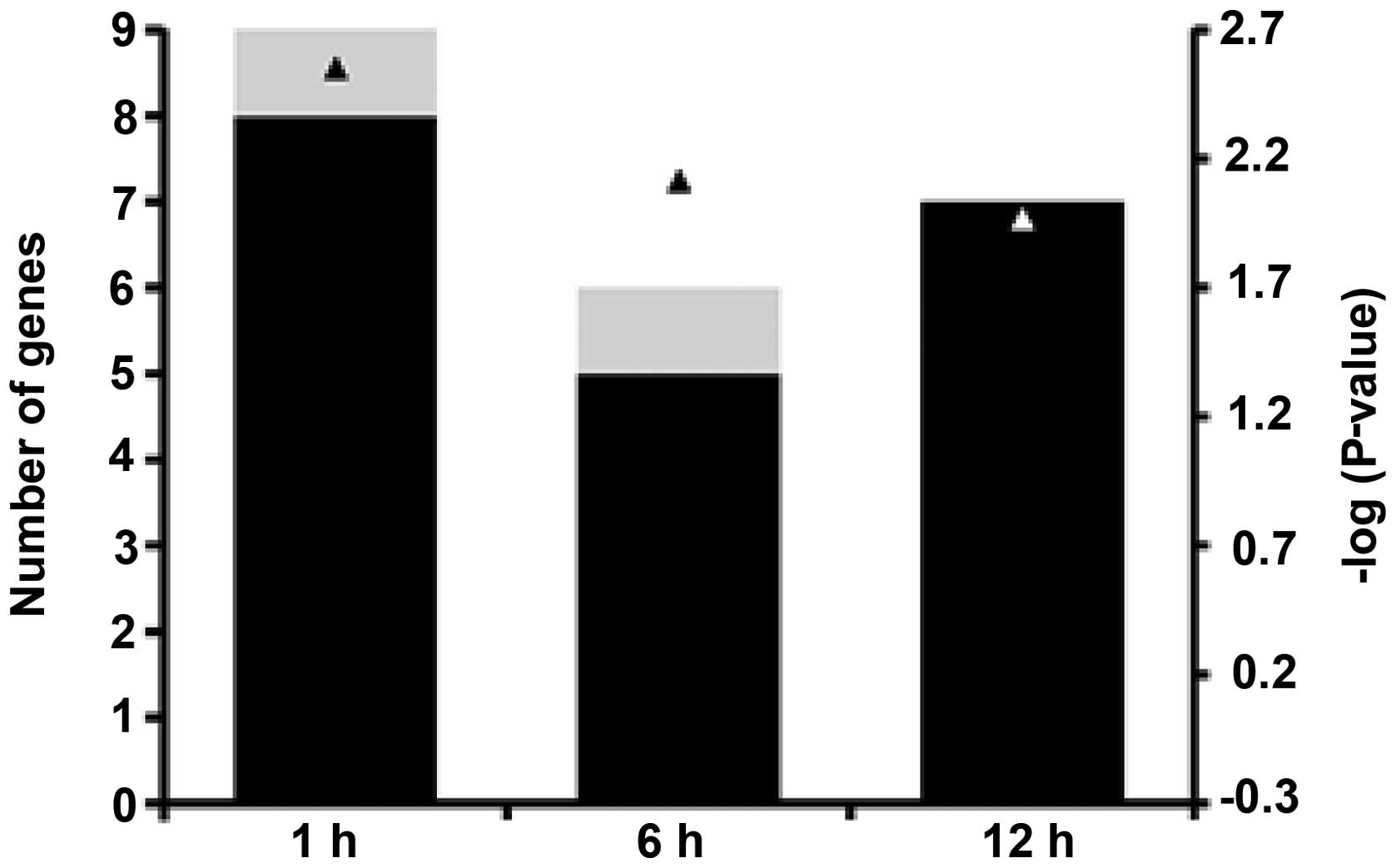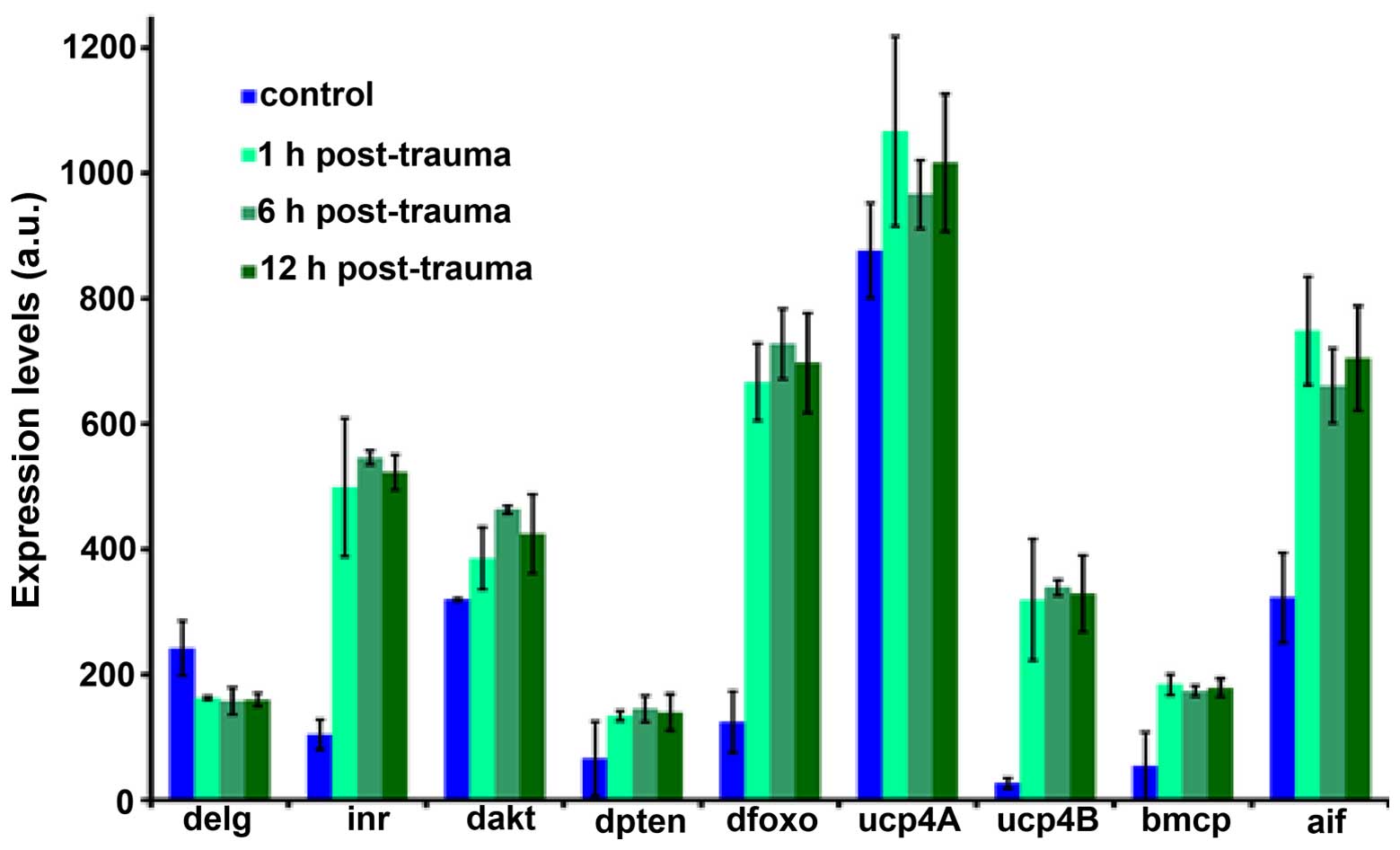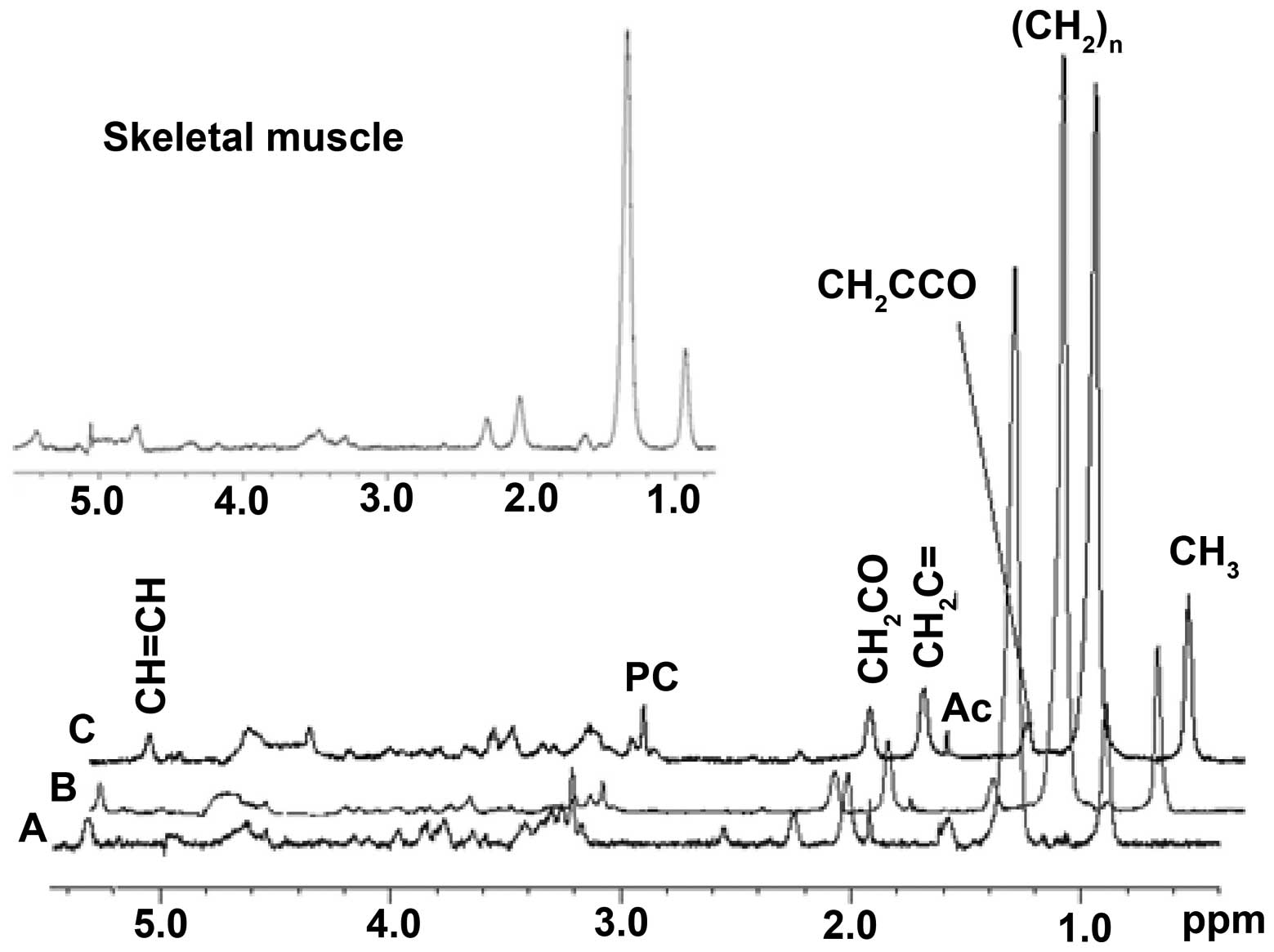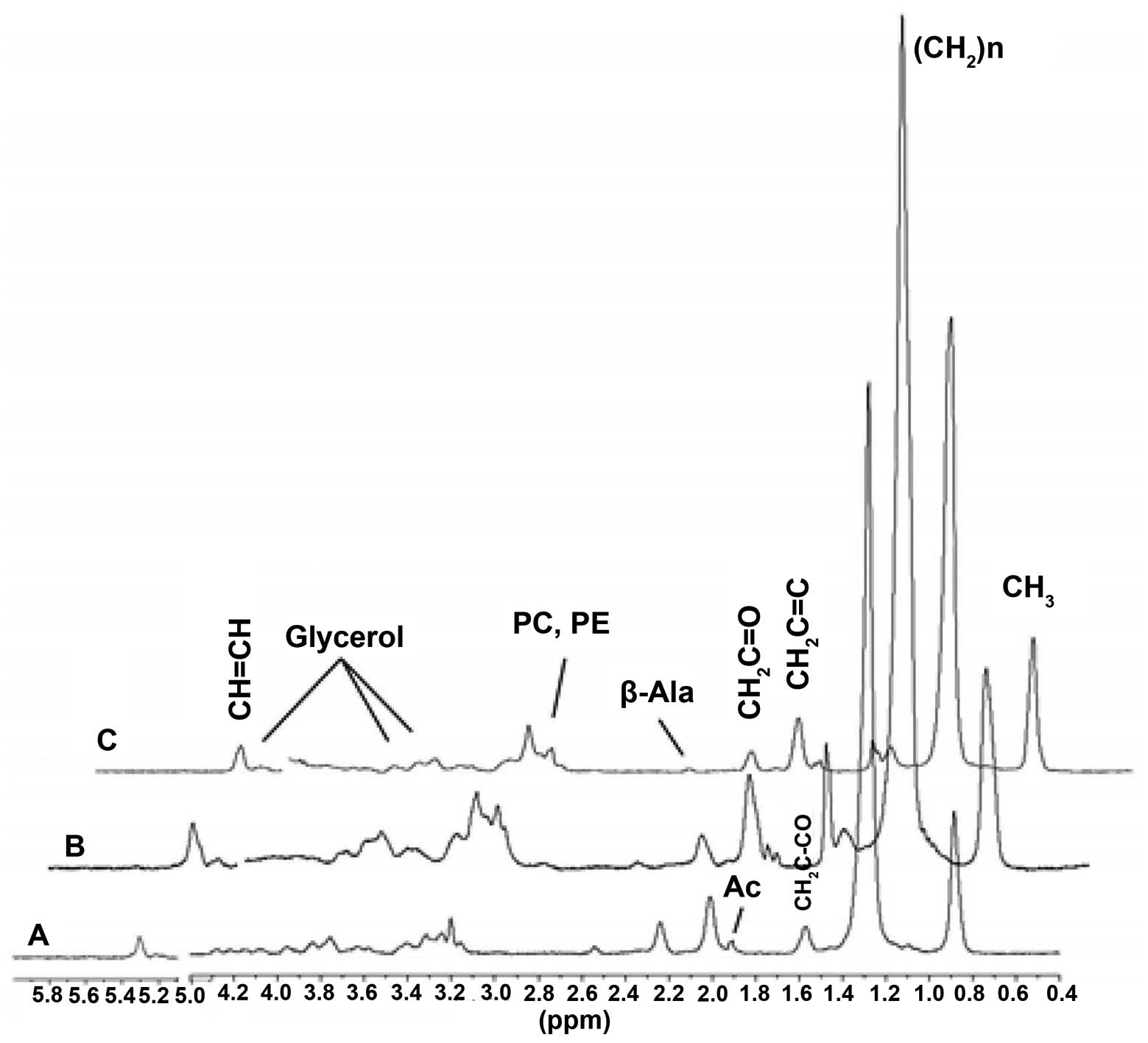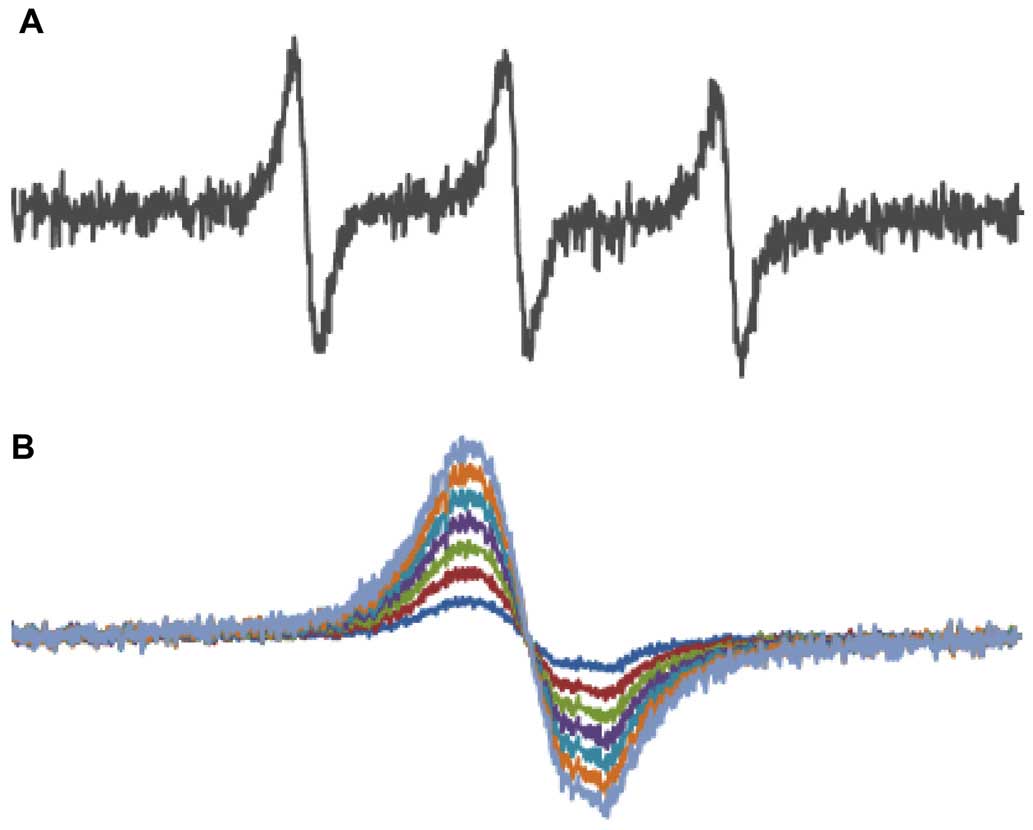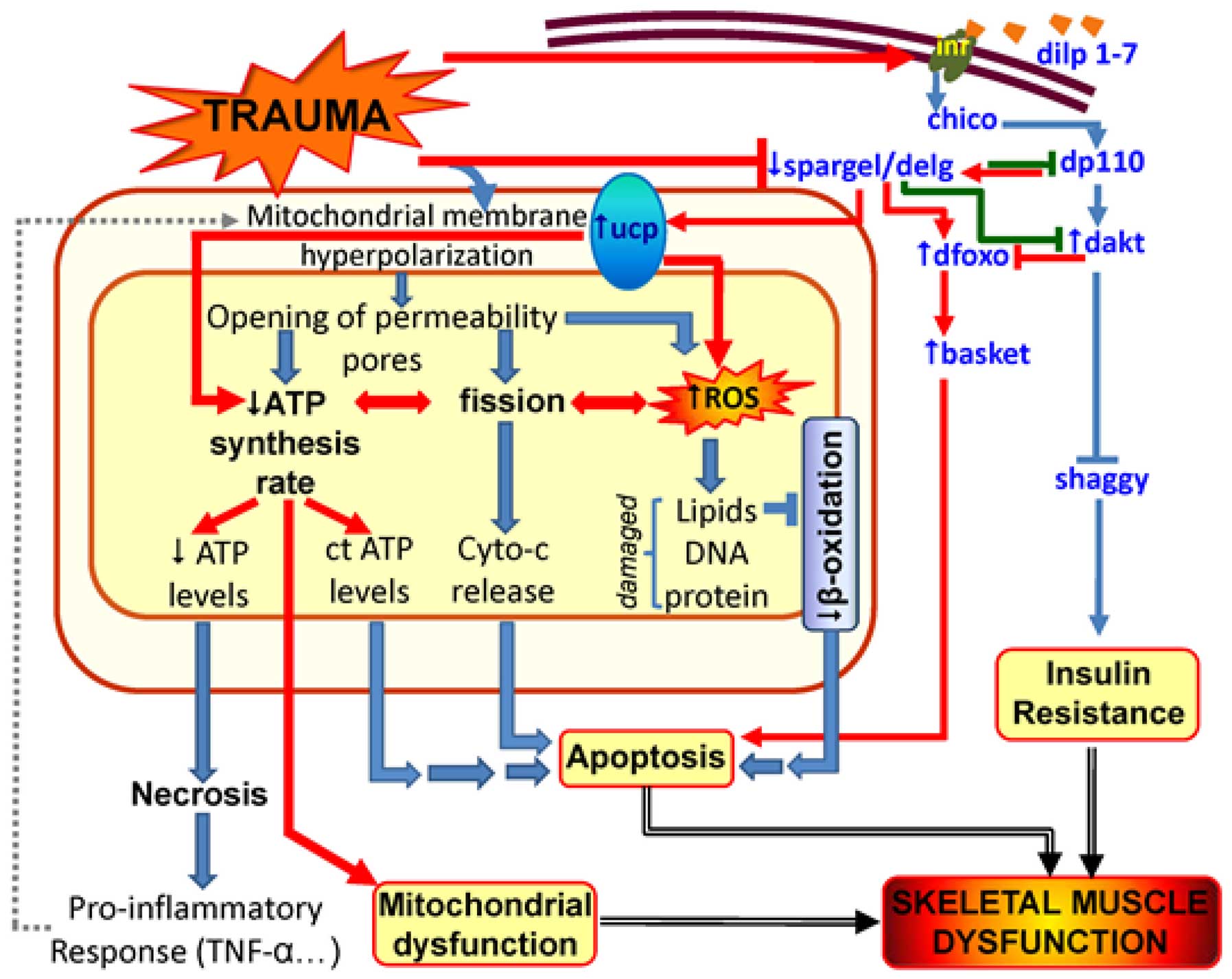|
1
|
Sobrino J and Shafi S: Timing and causes
of death after injuries. Proc (Bayl Univ Med Cent). 26:120–123.
2013.
|
|
2
|
López-Lluch G, Irusta PM, Navas P and de
Cabo R: Mitochondrial biogenesis and healthy aging. Exp Gerontol.
43:813–819. 2008. View Article : Google Scholar : PubMed/NCBI
|
|
3
|
Poulose N and Raju R: Aging and injury:
alterations in cellular energetics and organ function. Aging Dis.
5:101–108. 2014.PubMed/NCBI
|
|
4
|
Hubbard WJ, Bland KI and Chaudry IH: The
role of the mitochondrion in trauma and shock. Shock. 22:395–402.
2004. View Article : Google Scholar : PubMed/NCBI
|
|
5
|
Jacob S, Machann J, Rett K, Brechtel K,
Volk A, Renn W, Maerker E, Matthaei S, Schick F, Claussen CD and
Häring HU: Association of increased intramyocellular lipid content
with insulin resistance in lean nondiabetic offspring of type 2
diabetic subjects. Diabetes. 48:1113–1119. 1999. View Article : Google Scholar : PubMed/NCBI
|
|
6
|
Petersen KF, Befroy D, Dufour S, Dziura J,
Ariyan C, Rothman DL, DiPietro L, Cline GW and Shulman GI:
Mitochondrial dysfunction in the elderly: possible role in insulin
resistance. Science. 300:1140–1142. 2003. View Article : Google Scholar : PubMed/NCBI
|
|
7
|
Weybright P, Millis K, Campbell N, Cory DG
and Singer S: Gradient, high-resolution, magic angle spinning 1H
nuclear magnetic resonance spectroscopy of intact cells. Magn Reson
Med. 39:337–345. 1998. View Article : Google Scholar : PubMed/NCBI
|
|
8
|
Blankenberg FG, Storrs RW, Naumovski L,
Goralski T and Spielman D: Detection of apoptotic cell death by
proton nuclear magnetic resonance spectroscopy. Blood.
87:1951–1956. 1996.PubMed/NCBI
|
|
9
|
Cheng LL, Ma MJ, Becerra L, Ptak T, Tracey
I, Lackner A and González RG: Quantitative neuropathology by high
resolution magic angle spinning proton magnetic resonance
spectroscopy. Proc Natl Acad Sci U S A. 12:6408–6413. 1997.
View Article : Google Scholar
|
|
10
|
Cheng LL, Newell K, Mallory AE, Hyman BT
and Gonzalez RG: Quantification of neurons in Alzheimer and control
brains with ex vivo high resolution magic angle spinning proton
magnetic resonance spectroscopy and stereology. Magn Reson Imaging.
20:527–533. 2002. View Article : Google Scholar : PubMed/NCBI
|
|
11
|
Millis KK, Maas WE, Cory DG and Singer S:
Gradient, high-resolution, magic-angle spinning nuclear magnetic
resonance spectroscopy of human adipocyte tissue. Magn Reson Med.
38:399–403. 1997. View Article : Google Scholar : PubMed/NCBI
|
|
12
|
Barton SJ, Howe FA, Tomlins AM, Cudlip SA,
Nicholson JK, Bell BA and Griffiths JR: Comparison of in vivo 1H
MRS of human brain tumours with 1H HR-MAS spectroscopy of intact
biopsy samples in vitro. MAGMA. 8:121–128. 1999.PubMed/NCBI
|
|
13
|
Alves TC, Jarak I and Carvalho RA: NMR
methodologies for studying mitochondrial bioenergetics. Methods Mol
Biol. 810:281–309. 2012. View Article : Google Scholar
|
|
14
|
Szczepaniak LS, Babcock EE, Schick F,
Dobbins RL, Garg A, Burns DK, McGarry JD and Stein DT: Measurement
of intracellular triglyceride stores by H spectroscopy: validation
in vivo. Am J Physiol. 276:E977–E989. 1999.PubMed/NCBI
|
|
15
|
Feala JD, Coquin L, McCulloch AD and
Paternostro G: Flexibility in energy metabolism supports hypoxia
tolerance in Drosophila flight muscle: metabolomic and
computational systems analysis. Mol Syst Biol. 3:992007. View Article : Google Scholar : PubMed/NCBI
|
|
16
|
Pedersen KS, Kristensen TN, Loeschcke V,
Petersen BO, Duus JO, Nielsen NC and Malmendal A: metabolomic
signatures of inbreeding at benign and stressful temperatures in
Drosophila melanogaster. Genetics. 180:1233–1243. 2008. View Article : Google Scholar : PubMed/NCBI
|
|
17
|
Le Bourg E and Le Bourg E: Oxidative
stress, aging and longevity in Drosophila melanogaster. FEBS Lett.
498:183–186. 2001. View Article : Google Scholar : PubMed/NCBI
|
|
18
|
Garofalo RS: Genetic analysis of insulin
signaling in Drosophila. Trends Endocrinol Metab. 13:156–162. 2002.
View Article : Google Scholar : PubMed/NCBI
|
|
19
|
Saltiel AR and Kahn CR: Insulin signalling
and the regulation of glucose and lipid metabolism. Nature.
414:799–806. 2001. View Article : Google Scholar : PubMed/NCBI
|
|
20
|
Szeto HH: First-in-class
cardiolipin-protective compound as a therapeutic agent to restore
mitochondrial bioenergetics. Br J Pharmacol. 171:2029–2050. 2014.
View Article : Google Scholar :
|
|
21
|
Apidianakis Y, Mindrinos MN, Xiao W, Lau
GW, Baldini RL, Davis RW and Rahme LG: Profiling early infection
responses: Pseudomonas aeruginosa eludes host defenses by
suppressing antimicrobial peptide gene expression. Proc Natl Acad
Sci USA. 102:2573–2578. 2005. View Article : Google Scholar : PubMed/NCBI
|
|
22
|
Apidianakis Y and Rahme LG: Drosophila
melanogaster as a model host for studying Pseudomonas aeruginosa
infection. Nat Protoc. 4:1285–1294. 2009. View Article : Google Scholar : PubMed/NCBI
|
|
23
|
Böhni R, Riesgo-Escovar J, Oldham S,
Brogiolo W, Stocker H, Andruss BF, Beckingham K and Hafen E:
Autonomous control of cell and organ size by CHICO, a Drosophila
homolog of vertebrate IRS1-4. Cell. 97:865–875. 1999. View Article : Google Scholar : PubMed/NCBI
|
|
24
|
Meiboom S and Gill D: Modified spiin-echo
method for measuring nuclear relaxation time. Rev Sci Instrum.
29:688–691. 1958. View Article : Google Scholar
|
|
25
|
Levenberg K: Method for the solution of
certain non-linear problems in least squares. Q Appl Math.
2:164–168. 1944.
|
|
26
|
Marquardt D: An algorithm for
least-squares estimation of nonlinear parameters. SIAM J Appl Math.
11:431–441. 1963. View Article : Google Scholar
|
|
27
|
Swanson MG, Zektzer AS, Tabatabai ZL,
Simko J, Jarso S, Keshari KR, Schmitt L, Carroll PR, Shinohara K,
Vigneron DB and Kurhanewicz J: Quantitative analysis of prostate
metabolites using 1H HR-MAS spectroscopy. Magn Reson Med.
55:1257–1264. 2006. View Article : Google Scholar : PubMed/NCBI
|
|
28
|
Khan N and Das DK: Application of in vivo
EPR for tissue pO2 and redox measurements. Methods Mol
Biol. 559:131–139. 2009. View Article : Google Scholar
|
|
29
|
Swartz HM, Khan N and Khramtsov VV: Use of
electron paramagnetic resonance spectroscopy to evaluate the redox
state in vivo. Antioxid Redox Signal. 9:1757–1771. 2007. View Article : Google Scholar : PubMed/NCBI
|
|
30
|
Khan N, Mupparaju SP, Mintzopoulos D,
Kesarwani M, Righi V, Rahme LG, Swartz HM and Tzika AA: Burn trauma
in skeletal muscle results in oxidative stress as assessed by in
vivo electron paramagnetic resonance. Mol Med Rep. 1:813–819.
2008.PubMed/NCBI
|
|
31
|
Padfield KE, Astrakas LG, Zhang Q, Gopalan
S, Dai G, Mindrinos MN, Tompkins RG, Rahme LG and Tzika AA: Burn
injury causes mitochondrial dysfunction in skeletal muscle. Proc
Natl Acad Sci USA. 102:5368–5373. 2005. View Article : Google Scholar : PubMed/NCBI
|
|
32
|
Zhang Q, Cao H, Astrakas LG, Mintzopoulos
D, Mindrinos MN, Schulz J III, Tompkins RG, Rahme LG and Tzika AA:
Uncoupling protein 3 expression and intramyocellular lipid
accumulation by NMR following local burn trauma. Int J Mol Med.
18:1223–1229. 2006.PubMed/NCBI
|
|
33
|
Tzika AA, Astrakas LG, Cao H, Mintzopoulos
D, Zhang Q, Padfield K, Yu H, Mindrinos MN, Rahme LG and Tompkins
RG: Murine intramyocellular lipids quantified by NMR act as
metabolic biomarkers in burn trauma. Int J Mol Med. 21:825–832.
2008.PubMed/NCBI
|
|
34
|
Righi V, Apidianakis Y, Mintzopoulos D,
Astrakas L, Rahme LG and Tzika AA: In vivo high-resolution magic
angle spinning magnetic resonance spectroscopy of Drosophila
melanogaster at 14.1 T shows trauma in aging and in innate
immune-deficiency is linked to reduced insulin signaling. Int J Mol
Med. 26:175–184. 2010.PubMed/NCBI
|
|
35
|
Astrakas LG, Goljer I, Yasuhara S,
Padfield KE, Zhang Q, Gopalan S, Mindrinos MN, Dai G, Yu YM, Martyn
JA, et al: Proton NMR spectroscopy shows lipids accumulate in
skeletal muscle in response to burn trauma-induced apoptosis. FASEB
J. 19:1431–1440. 2005. View Article : Google Scholar : PubMed/NCBI
|
|
36
|
Weis J, Johansson L, Ortiz-Nieto F and
Ahlström H: Assessment of lipids in skeletal muscle by LCModel and
AMARES. J Magn Reson Imaging. 30:1124–1129. 2009. View Article : Google Scholar : PubMed/NCBI
|
|
37
|
Wang L, Salibi N, Wu Y, Schweitzer ME and
Regatte RR: Relaxation times of skeletal muscle metabolites at 7T.
J Magn Reson Imaging. 29:1457–1464. 2009. View Article : Google Scholar : PubMed/NCBI
|
|
38
|
Griffin JL, Williams HJ, Sang E and
Nicholson JK: Abnormal lipid profile of dystrophic cardiac tissue
as demonstrated by one- and two-dimensional magic-angle spinning
(1)H NMR spectroscopy. Magn Reson Med. 46:249–255. 2001. View Article : Google Scholar : PubMed/NCBI
|
|
39
|
Chen JH, Sambol EB, Decarolis P, O'Connor
R, Geha RC, Wu YV and Singer S: High-resolution MAS NMR
spectroscopy detection of the spin magnetization exchange by
cross-relaxation and chemical exchange in intact cell lines and
human tissue specimens. Magn Reson Med. 55:1246–1256. 2006.
View Article : Google Scholar : PubMed/NCBI
|
|
40
|
Tiefenböck SK, Baltzer C, Egli NA and Frei
C: The Drosophila PGC-1 homologue Spargel coordinates mitochondrial
activity to insulin signalling. EMBO J. 29:171–183. 2010.
View Article : Google Scholar :
|
|
41
|
Baltzer C, Tiefenböck SK, Marti M and Frei
C: Nutrition controls mitochondrial biogenesis in the Drosophila
adipose tissue through Delg and cyclin D/Cdk4. PLoS One.
4:e69352009. View Article : Google Scholar : PubMed/NCBI
|
|
42
|
Padfield KE, Zhang Q, Gopalan S, Tzika AA,
Mindrinos MN, Tompkins RG and Rahme LG: Local and distant burn
injury alter immuno-inflammatory gene expression in skeletal
muscle. J Trauma. 61:280–292. 2006. View Article : Google Scholar : PubMed/NCBI
|
|
43
|
Tzika AA, Mintzopoulos D, Padfield K,
Wilhelmy J, Mindrinos MN, Yu H, Cao H, Zhang Q, Astrakas LG, Zhang
J, et al: Reduced rate of adenosine triphosphate synthesis by in
vivo31P nuclear magnetic resonance spectroscopy and downregulation
of PGC-1β in distal skeletal muscle following burn. Int J Mol Med.
21:201–208. 2008.PubMed/NCBI
|
|
44
|
Righi V, Andronesi O, Mintzopoulos D and
Tzika AA: Molecular characterization and quantification using state
of the art solid-state adiabatic TOBSY NMR in burn trauma. Int J
Mol Med. 24:749–757. 2009.PubMed/NCBI
|
|
45
|
Tzika AA, Mintzopoulos D, Mindrinos M,
Zhang J, Rahme LG and Tompkins RG: Microarray analysis suggests
that burn injury results in mitochondrial dysfunction in human
skeletal muscle. Int J Mol Med. 24:387–392. 2009. View Article : Google Scholar : PubMed/NCBI
|
|
46
|
Thompson LH, Kim HT, Ma Y, Kokorina NA and
Messina JL: Acute, muscle-type specific insulin resistance
following injury. Mol Med. 14:715–723. 2008. View Article : Google Scholar : PubMed/NCBI
|
|
47
|
Machann J, Thamer C, Schnoedt B, Stefan N,
Stumvoll M, Haring HU, Claussen CD, Fritsche A and Schick F: Age
and gender related effects on adipose tissue compartments of
subjects with increased risk for type 2 diabetes: a whole body
MRI/MRS study. MAGMA. 18:128–137. 2005. View Article : Google Scholar : PubMed/NCBI
|
|
48
|
Nakagawa Y, Hattori M, Harada K, Shirase
R, Bando M and Okano G: Age-related changes in intramyocellular
lipid in humans by in vivo H-MR spectroscopy. Gerontology.
53:218–223. 2007. View Article : Google Scholar : PubMed/NCBI
|
|
49
|
Rouffet D, Villars C, Fissoune R,
Sappey-Marinier D, Laville M, Ibarrola D, Sothier M, Monnet MF,
Ovize M and Bonnefoy M: Intramyocellular lipid variations in active
older men: relationship with aerobic fitness. Acta Physiol (Oxf).
207:516–523. 2013. View Article : Google Scholar
|
|
50
|
Petersen KF, Morino K, Alves TC, Kibbey
RG, Dufour S, Sono S, Yoo PS, Cline GW and Shulman GI: Effect of
aging on muscle mitochondrial substrate utilization in humans. Proc
Natl Acad Sci USA. 112:11330–11334. 2015. View Article : Google Scholar : PubMed/NCBI
|
|
51
|
Sinha R, Dufour S, Petersen KF, LeBon V,
Enoksson S, Ma YZ, Savoye M, Rothman DL, Shulman GI and Caprio S:
Assessment of skeletal muscle triglyceride content by (1)H nuclear
magnetic resonance spectroscopy in lean and obese adolescents:
relationships to insulin sensitivity, total body fat, and central
adiposity. Diabetes. 51:1022–1027. 2002. View Article : Google Scholar : PubMed/NCBI
|
|
52
|
Schrauwen-Hinderling VB, Hesselink MK,
Schrauwen P and Kooi ME: Intramyocellular lipid content in human
skeletal muscle. Obesity (Silver Spring). 14:357–367. 2006.
View Article : Google Scholar
|
|
53
|
Consitt LA, Bell JA and Houmard JA:
Intramuscular lipid metabolism, insulin action, and obesity. IUBMB
Life. 61:47–55. 2009. View Article : Google Scholar :
|
|
54
|
Johnson AB, Argyraki M, Thow JC, Cooper
BG, Fulcher G and Taylor R: Effect of increased free fatty acid
supply on glucose metabolism and skeletal muscle glycogen synthase
activity in normal man. Clin Sci (Lond). 82:219–226. 1992.
View Article : Google Scholar
|
|
55
|
Mootha VK, Bunkenborg J, Olsen JV,
Hjerrild M, Wisniewski JR, Stahl E, Bolouri MS, Ray HN, Sihag S,
Kamal M, et al: Integrated analysis of protein composition, tissue
diversity, and gene regulation in mouse mitochondria. Cell.
115:629–640. 2003. View Article : Google Scholar : PubMed/NCBI
|
|
56
|
Petersen KF, Dufour S, Befroy D, Garcia R
and Shulman GI: Impaired mitochondrial activity in the
insulin-resistant offspring of patients with type 2 diabetes. N
Engl J Med. 350:664–671. 2004. View Article : Google Scholar : PubMed/NCBI
|
|
57
|
Patti ME, Butte AJ, Crunkhorn S, Cusi K,
Berria R, Kashyap S, Miyazaki Y, Kohane I, Costello M, Saccone R,
et al: Coordinated reduction of genes of oxidative metabolism in
humans with insulin resistance and diabetes: potential role of PGC1
and NRF1. Proc Natl Acad Sci USA. 100:8466–8471. 2003. View Article : Google Scholar : PubMed/NCBI
|
|
58
|
Paumen MB, Ishida Y, Muramatsu M, Yamamoto
M and Honjo T: Inhibition of carnitine palmitoyltransferase I
augments sphingolipid synthesis and palmitate-induced apoptosis. J
Biol Chem. 272:3324–3329. 1997. View Article : Google Scholar : PubMed/NCBI
|
|
59
|
Ruddock MW, Stein A, Landaker E, Park J,
Cooksey RC, McClain D and Patti ME: Saturated fatty acids inhibit
hepatic insulin action by modulating insulin receptor expression
and post-receptor signalling. J Biochem. 144:599–607. 2008.
View Article : Google Scholar : PubMed/NCBI
|
|
60
|
Yasuhara S, Perez ME, Kanakubo E, Yasuhara
Y, Shin YS, Kaneki M, Fujita T and Martyn JA: Skeletal muscle
apoptosis after burns is associated with activation of proapoptotic
signals. Am J Physiol Endocrinol Metab. 279:E1114–E1121.
2000.PubMed/NCBI
|
|
61
|
Tomera JF and Martyn J: Systemic effects
of single hindlimb burn injury on skeletal muscle function and
cyclic nucleotide levels in the murine model. Burns. 14:210–219.
1988. View Article : Google Scholar
|
|
62
|
Birk AV, Liu S, Soong Y, Mills W, Singh P,
Warren JD, Seshan SV, Pardee JD and Szeto HH: The
mitochondrial-targeted compound SS-31 re-energizes ischemic
mitochondria by interacting with cardiolipin. J Am Soc Nephrol.
24:1250–1261. 2013. View Article : Google Scholar : PubMed/NCBI
|
|
63
|
Szeto HH: Cell-permeable,
mitochondrial-targeted, peptide antioxidants. AAPS J. 8:E277–E283.
2006. View Article : Google Scholar : PubMed/NCBI
|
|
64
|
Min K, Smuder AJ, Kwon OS, Kavazis AN,
Szeto HH and Powers SK: Mitochondrial-targeted antioxidants protect
skeletal muscle against immobilization-induced muscle atrophy. J
Appl Physiol 1985. 111:1459–1466. 2011. View Article : Google Scholar : PubMed/NCBI
|
|
65
|
Anderson EJ, Lustig ME, Boyle KE, Woodlief
TL, Kane DA, Lin CT, Price JW III, Kang L, Rabinovitch PS, Szeto
HH, et al: Mitochondrial H2O2 emission and
cellular redox state link exces fat intake to insulin resistance in
both rodents and humans. J Clin Invest. 119:573–581. 2009.
View Article : Google Scholar : PubMed/NCBI
|
|
66
|
Carter EA, Bonab AA, Goverman J, Paul K,
Yerxa J, Tompkins RG and Fischman AJ: Evaluation of the antioxidant
peptide SS31 for treatment of burn-induced insulin resistance. Int
J Mol Med. 28:589–594. 2011.PubMed/NCBI
|
|
67
|
Siegel MP, Kruse SE, Percival JM, Goh J,
White CC, Hopkins HC, Kavanagh TJ, Szeto HH, Rabinovitch PS and
Marcinek DJ: Mitochondrial-targeted peptide rapidly improves
mitochondrial energetics and skeletal muscle performance in aged
mice. Aging Cell. 12:763–771. 2013. View Article : Google Scholar : PubMed/NCBI
|
|
68
|
Powers SK, Hudson MB, Nelson WB, Talbert
EE, Min K, Szeto HH, Kavazis AN and Smuder AJ:
Mitochondria-targeted antioxidants protect against mechanical
ventilation-induced diaphragm weakness. Crit Care Med.
39:1749–1759. 2011. View Article : Google Scholar : PubMed/NCBI
|
|
69
|
Zhao K, Zhao GM, Wu D, Soong Y, Birk AV,
Schiller PW and Szeto HH: Cell-permeable peptide antioxidants
targeted to inner mitochondrial membrane inhibit mitochondrial
swelling, oxidative cell death, and reperfusion injury. J Biol
Chem. 279:34682–34690. 2004. View Article : Google Scholar : PubMed/NCBI
|
|
70
|
Smith JA, Park S, Krause JS and Banik NL:
Oxidative stress, DNA damage, and the telomeric complex as
therapeutic targets in acute neurodegeneration. Neurochem Int.
62:764–775. 2013. View Article : Google Scholar : PubMed/NCBI
|
|
71
|
Ozkur MK, Bozkurt MS, Balabanli B,
Aricioglu A, Ilter N, Gürer MA and Inalöz HS: The effects of EGb
761 on lipid peroxide levels and superoxide dismutase activity in
sunburn. Photodermatol Photoimmunol Photomed. 18:117–120. 2002.
View Article : Google Scholar : PubMed/NCBI
|
|
72
|
Akeo K, Amaki S, Suzuki T and Hiramitsu T:
Melanin granules prevent the cytotoxic effects of L-DOPA on retinal
pigment epithelial cells in vitro by regulation of NO and
superoxide radicals. Pigment Cell Res. 13:80–88. 2000. View Article : Google Scholar : PubMed/NCBI
|
|
73
|
Szeto HH: Mitochondria-targeted peptide
antioxidants: novel neuroprotective agents. AAPS J. 8:E521–E531.
2006. View Article : Google Scholar : PubMed/NCBI
|
|
74
|
Szeto HH: Development of
mitochondria-targeted aromatic-cationic peptides for
neurodegenerative diseases. Ann N Y Acad Sci. 1147:112–121. 2008.
View Article : Google Scholar : PubMed/NCBI
|
|
75
|
Lowell BB and Shulman GI: Mitochondrial
dysfunction and type 2 diabetes. Science. 307:384–387. 2005.
View Article : Google Scholar : PubMed/NCBI
|















